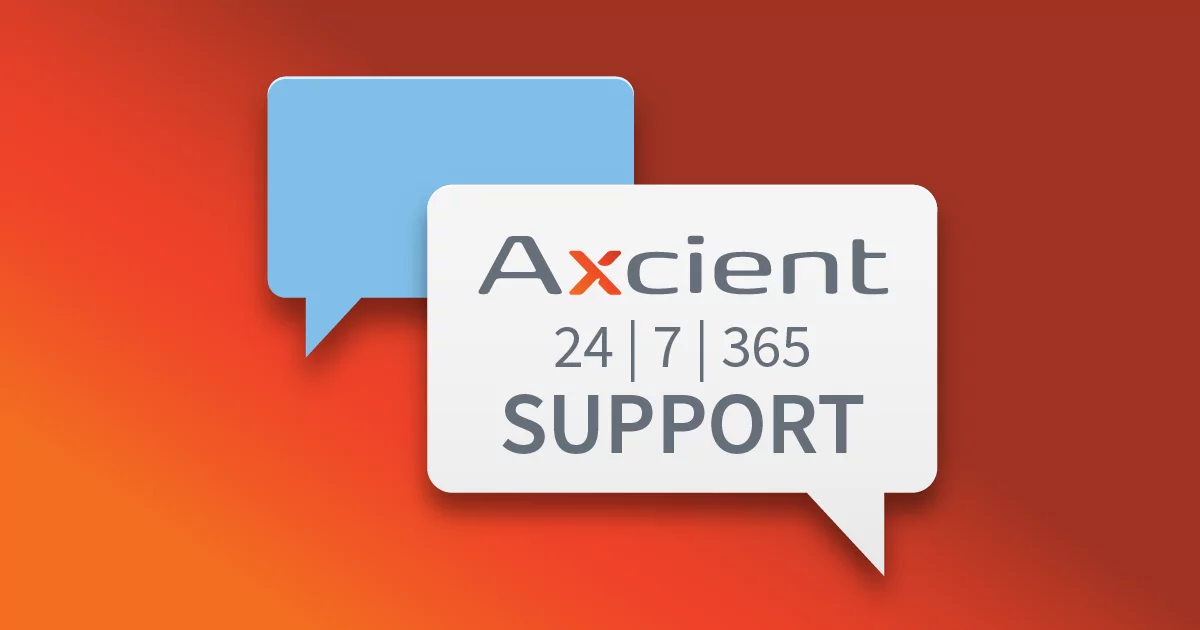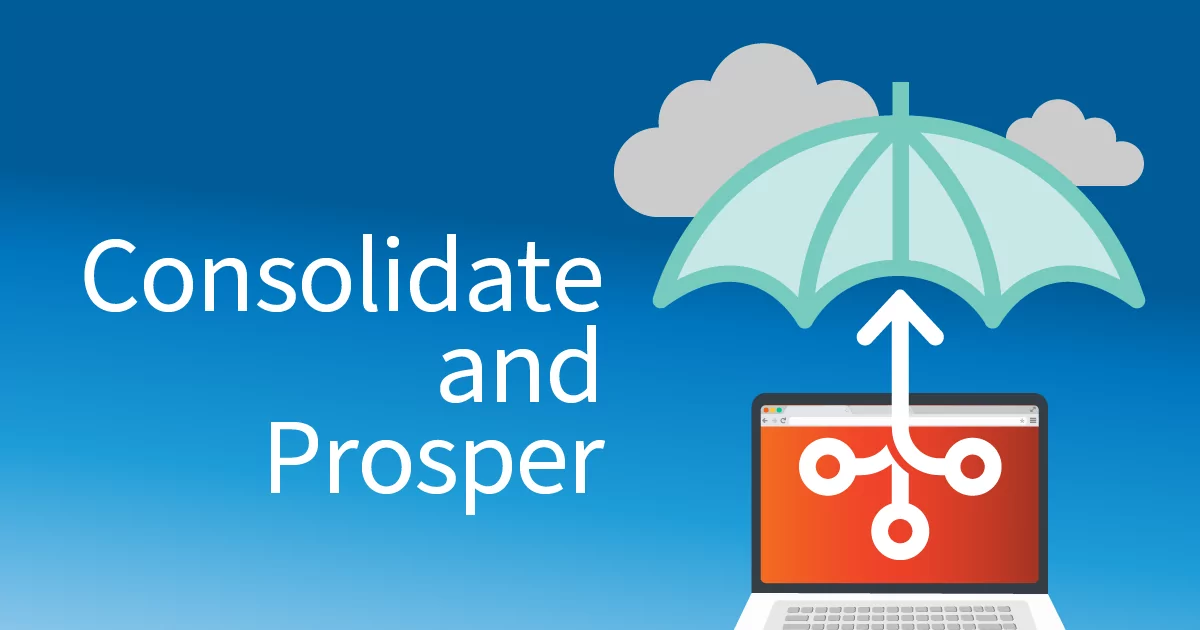
The MSP’s Guide to Evaluating Disaster Recovery Solutions for Small Business in 2023
Table of Contents
Introduction
Data integrity and business continuity are foundational for success in today’s digital business era. For Managed Service Providers (MSPs) who are tasked with safeguarding the data assets of their clients, implementing robust disaster recovery protections for small businesses is not just an option—it’s a necessity.
The challenge lies in selecting and deploying the right stack, strategies, and practices to ensure that critical business functions can be quickly restored with minimal disruption during a disaster. Explore the essential aspects of data restoration in this guide for backup solutions for small businesses and keep your clients moving in an unpredictable world.
Understanding Disaster Recovery and Its Importance
Disaster recovery (DR) is critical for any business but is especially crucial for small and medium-sized businesses (SMBs). 37% of organizations say disaster recovery is their primary data protection-related project. And for a good reason: 2 in 3 midsized businesses recently experienced a ransomware attack, and malware is involved in 15% of data breaches.
Disaster recovery comprises the policies, tools, and procedures that enable the recovery or continuation of technology infrastructure and systems following a natural or human-induced disaster. It’s part of a business continuity plan and ensures that data, applications, and hardware are available and functional.
The Role of MSPs in Disaster Recovery
MSPs provide specialized disaster recovery expertise, monitoring, data backup, compliance management, testing, and training as part of their disaster recovery services. MSPs are instrumental in supporting client’s disaster recovery plans with the right tools, solutions, and vendors to meet the evolving cybersecurity landscape.
Your business continuity and disaster recovery (BCDR) solutions should be scalable to adapt to your growth and changing client needs. An MSP’s ultimate job is to keep client businesses moving by restoring business-critical systems to minimize potential losses.
Four Business Benefits of a Backup and Disaster Recovery Solution
- Minimize Downtime. Reduce financial losses for your client and your MSP by enabling business continuity for stringent SLAs, customer satisfaction and loyalty, and reputation.
- Meet Compliance Standards. A SOC2, Type II certified system ensures that your MSP adheres to high cybersecurity standards, and you can help clients meet their industry-specific regulations to avoid potential fines and legal troubles.
- Enhance Data Security. Automatic backups and disaster recovery plan testing ensure reliable and rapid recovery is possible no matter how data is lost.
- Stay Competitive. Secure a top market position by highlighting your MSP’s commitment to backup and disaster recovery best practices via the protections you provide clients.
Evaluating Disaster Recovery Services for Small Business
Evaluating disaster recovery software is a process that demands attention to many critical factors to ensure alignment with your and your client’s business needs and objectives. Cost is often a primary concern, encompassing both the initial investment and ongoing expenses. Scalability is also vital for adapting to business growth or contraction, while reliability contains both the solution’s performance and the vendor’s reputation. Security considerations include both data protection measures and regulatory compliance, ensuring that sensitive information remains safeguarded.
You must also consider the user experience, support, and training to support technicians in the implementation and management of the solution. Integration with existing systems and future compatibility enhance efficiency, and ongoing testing and maintenance ensure that the solution remains effective over time.
Key Features to Look for in a Disaster Recovery Solution
A complete DR solution offers various critical features to ensure protection and fast recovery. Here are some essential features a reasonable DR solution should encompass:
- Data Backup. Automatically ensure that all crucial data is copied, saved, and stored securely every day with modern innovations that eliminate manual, error-prone backups.
- System Restore Capabilities. Minimize downtime using selective restoration to recover specific files or entire systems, depending on the need.
- Real-Time Monitoring. Get continuous systems oversight to detect any unusual activities or threats with immediate alerting to designated personnel for a quick response.
- DR Planning Tools. Create, manage, test, and generate reporting on customized DR plans that align with your client’s specific needs and compliance requirements.
- Compliance Management. Meet all legal and industry-specific regulations to avoid potential fines and legal issues.
- Scalability and Flexibility. Quickly adapt to business growth or contraction and seamlessly integrate with existing technologies to expand or reduce resources on demand.
Top Disaster Recovery Solutions for Small Businesses

Axcient x360Recover
Axcient is an award-winning leader in BCDR for MSPs. Axcient x360 provides one platform for MSPs to protect everything – including BCDR, Microsoft 365 and Google Workspace backup, and secure sync and share.
Application
Axcient x360Recover is the most comprehensive and cost-effective BCDR solution made specifically for MSPs and their SMBs. With just one solution and one vendor, MSPs can meet a range of client needs based on budget, environment, infrastructure, and compliance requirements.
Technology
Disaster recovery for small business requires time and labor-saving automation so that MSPs can accelerate the delivery of disaster recovery services. Axcient’s proprietary Chain-Free image-based backups eliminate the pains, cost, and complexity of legacy chain-based backups. Built-in and always-on technologies – including AutoVerify for automatic backup integrity testing, Virtual Office for near-instant cloud failover, and AirGap for anti-ransomware and data-deletion protection – reinforce cybersecurity best practices.
Business Model
Most use cases get ample storage with Axcient’s simple flat fee price per device or per server, and data pooling is permitted per Axcient’s Fair Use Policy, so there are no surprise overages.
Reviews
Check out Gartner Peer Insights for Axcient x360Recover reviews, ratings, and features, where 95% of respondents awarded this solution four stars or higher. For more insights into customer experiences, visit G2, Capterra, or Trust Radius.

Datto SIRIS
Datto, a Kaseya brand since it was acquired in late 2022, provides cloud-based software and technology solutions delivered by MSPs. Datto offers Unity Continuity, Networking, and Business Management solutions and has created an ecosystem of MSP partners. These partners provide Datto solutions to businesses across the globe.
Application
Datto SIRIS provides disaster recovery through data backup and continuity features that enable critical applications and data recovery in the event of a disaster. It offers automated backups, virtualization, and monitoring to reduce downtime and minimize data loss. With its cloud-based capabilities, Datto SIRIS offers off-site data replication, further safeguarding data and enabling efficient recovery.
Technology
SIRIS leverages hybrid cloud technology to deliver image-based backups and virtualization, ensuring data integrity and timely recovery. While the technology is robust, some users have reported complexity in setting up the system, which might be challenging for businesses without dedicated IT resources.
Business Model
Datto’s disaster recovery software comes on different pricing tiers based on the business’s needs and scale. The pricing structure may vary widely, leading to potential confusion for prospective buyers. A clear understanding of your needs and budget considerations is critical when choosing the appropriate business tier.
Reviews
Datto has generally received positive reviews for its usability, but MSPs have voiced concerns since it was acquired by Kaseya. Long contracts, high storage costs, and strict appliance requirements have caused some MSPs to repurpose their devices with hardware-agnostic vendors instead. It’s essential that MSPs thoroughly evaluate the costs and consider client needs when selecting a vendor.

Veeam Backup & Replication
Veeam was acquired by InsightPartners in 2020 and specializes in backup and disaster recovery software and intelligent data management for various business sizes and sectors. Veeam protects data anywhere in the hybrid cloud.
Application
Veeam Backup & Replication is designed with SMBs in mind and focuses on virtual environments. This solution targets companies aiming for a swift recovery and robust data protection, both in cloud and on-premises environments.
Technology
Veeam offers image-level Virtual Machine (VM) backups, replication, and storage snapshots. Those features facilitate quick recovery and secure data transfer. However, some users might find the configuration and management of these features complex, especially if unfamiliar with virtual environments. The solution’s strong focus on virtual systems may limit its applicability for businesses with more traditional IT setups.
Business Model
Veeam’s pricing structure is flexible, offering different options based on the functionalities required and the scale of the operation. While this flexibility can be an asset, it may also introduce complexity in understanding the most cost-effective option for specific business needs.
Reviews
Veeam has earned praise for its efficiency and reliability across various industry review platforms. However, customer support experiences have varied, with some users expressing dissatisfaction with response times or resolutions.

Carbonite Safe Server Backup
Carbonite, Inc. focuses on providing cloud-based backup and recovery solutions designed to protect data for individuals and businesses of all sizes.
Application
Carbonite Recover was created for businesses to securely replicate critical systems and data to the cloud with immediate failover to a secondary system.
Technology
Leveraging hybrid and cloud backup solutions, Carbonite ensures real-time backup and rapid restoration. The user-friendly interface can be a significant advantage for businesses without dedicated IT teams. However, the simplicity may limit customization options for more complex infrastructure or specialized requirements.
Pricing Model
Carbonite offers tiered pricing structures based on specific business needs and the size of the data environment. While this model caters to varying budget constraints, some users may find the cost of higher-tier services prohibitive or may encounter unexpected fees for additional functionalities.
Reviews
Carbonite Safe has generally positive reviews for its ease of use and support. Some users reported issues with slow backup speeds and challenges restoring large datasets. This could hinder the RTO for businesses with extensive or frequently updated data.

Acronis Cyber Backup
Acronis specializes in cyber protection, including backup, DR, and secure file sync and share solutions. It has built its reputation on a foundation of innovation and technological leadership, introducing many industry-first solutions over its history. Its focus on integrating data protection with cybersecurity places it at the forefront of the evolving data landscape.
Application
Acronis Cyber Backup is designed to cater to the needs of various businesses, including small and medium-sized organizations. It provides comprehensive protection for data across physical, virtual, and cloud environments, aiming to assure business continuity and minimize downtime.
Technology
Acronis provides a hybrid cloud architecture, delivering fast and secure backups and recoveries through its proprietary AI-based anti-ransomware technology.
Business Model
Acronis offers a flexible pricing model, with options based on the required functionalities and scale of operation. However, many options and additional features can confuse selecting the most suitable and cost-effective package.
Reviews
Users have praised Acronis for its innovation and effectiveness in providing cyber protection, including advanced anti-ransomware measures. Some users have raised concerns about customer support responsiveness and challenges in understanding the vast array of features and pricing options.
Conclusion: Choosing the Right Disaster Recovery Service
MSPs need to select the best disaster recovery services for clients to protect data integrity, business continuity, and long-term growth. Each tool offers unique features and benefits, catering to different needs, technical environments, and budget considerations.
The ideal DR solution employs a simple technology infrastructure that enables business objectives within budget constraints while securing BCDR. Careful evaluation of these factors and a thorough understanding of the features, capabilities, and business models offered will help you choose the best DR solution for protection, scalability, and peace of mind. The future of business resilience depends on the mindful selection and implementation of these essential tools.
FAQs
How do I create a disaster recovery plan for my business?
Creating a disaster recovery plan for your MSP involves first conducting a thorough risk assessment to identify potential threats and vulnerabilities that could impact operations. Understand the critical systems, applications, and data that need protection and establish both recovery point objective (RPO) and recovery time objective (RTO) to define acceptable levels of data loss and downtime.
Next, develop a comprehensive strategy that includes regular data backups, emergency response procedures, and a clear recovery process. This plan should detail the roles and responsibilities of key personnel and outline step-by-step procedures for restoring normal operations. Regular testing and updating of the disaster recovery plan ensure that it remains effective as the business environment evolves. Remember, communication with stakeholders and training for responsible personnel are vital elements for all business processes and critical data to be restored after disaster strikes.
What are disaster recovery solutions?
DR solutions are specialized tools to restore system functionality after catastrophic events such as a natural disaster, cyberattack, or equipment failure. These solutions encompass various aspects, like establishing a business data backup process with system replication, emergency response planning, and automation for quick recovery. It helps minimize downtime and data loss, ensuring that essential business operations can resume as quickly as possible following a disruptive incident.
What are the 3 types of recovery site strategies in disaster recovery?
In the realm of disaster recovery, establishing a recovery site is a fundamental strategy to ensure business continuity in the face of unexpected events. Strategies vary in readiness, cost, and complexity and are tailored to meet a business’s specific needs and priorities. The three primary types are hot sites, warm sites, and cold sites:
- Hot sites are fully operational off-site data centers with hardware, applications, and data from the original site.
- Cold sites are physical spaces with necessary infrastructure but lack pre-installed hardware and software.
- Warm sites are a compromise between the two, with some pre-installed hardware and regularly backed-up data but no real-time application synchronization.
What are some of the best practices for disaster recovery?
Best practices include:
- Conducting regular risk assessments to identify and mitigate potential threats.
- Defining clear RPO and RTO to establish acceptable levels of data loss and downtime
- Implementing regular data backups and ensuring they’re securely stored off-site.
- Employing a tiered recovery strategy to prioritize the restoration of critical systems and applications, regularly testing and updating the DR plan to ensure its effectiveness.
- Training personnel on their roles and responsibilities within the plan.
- Maintaining clear and transparent communication with all stakeholders, including employees, suppliers, and customers.
Adhering to these best practices, MSPs can enhance an organization’s resilience against disruptive incidents and ensure faster and more effective recovery.
Author
Related posts
How well could you sleep with reliable cloud-based backups and recovery?
Take a deep dive into Axcient’s proprietary, automated security features to see how we’re ensuring uninterrupted business continuity — no matter what:




